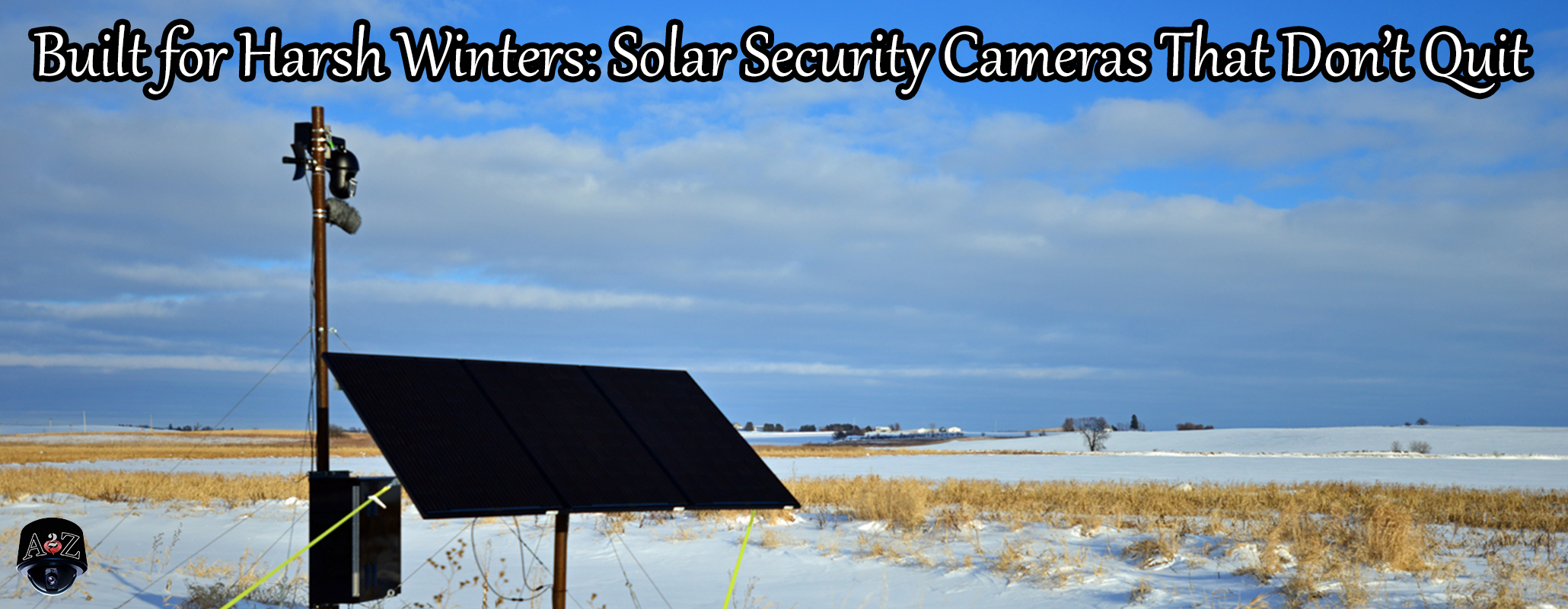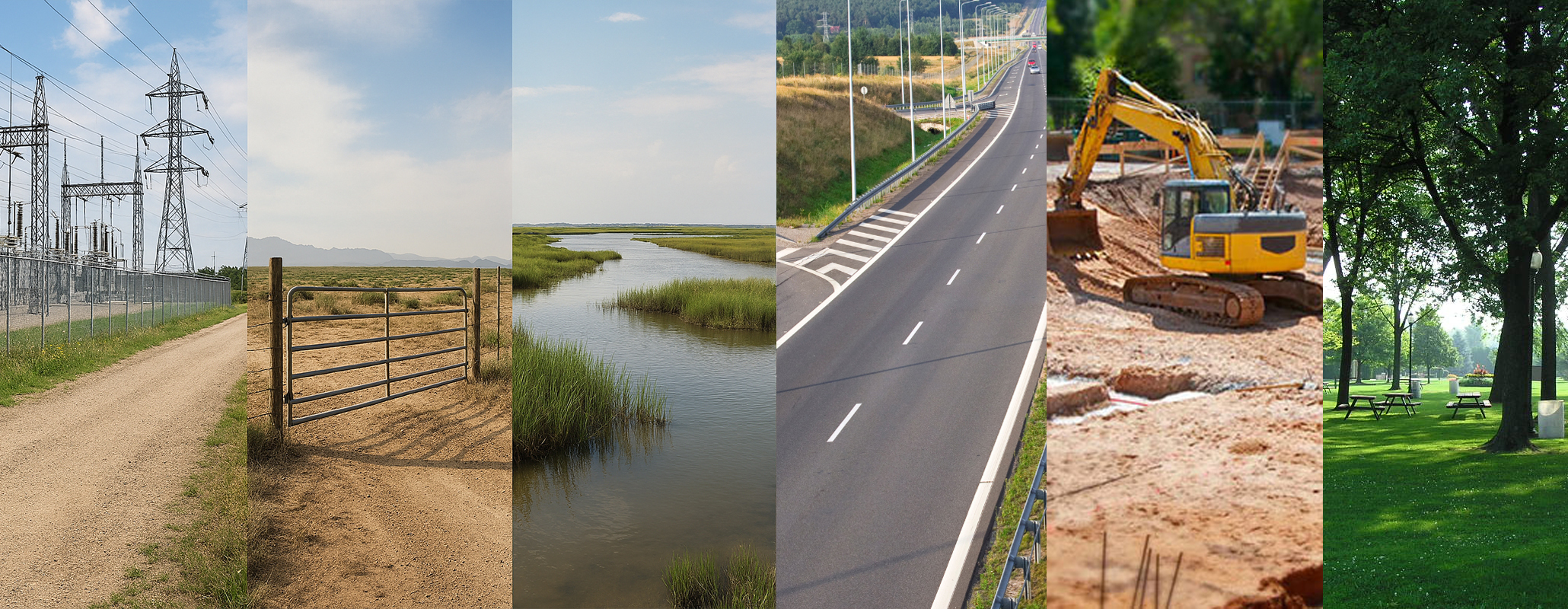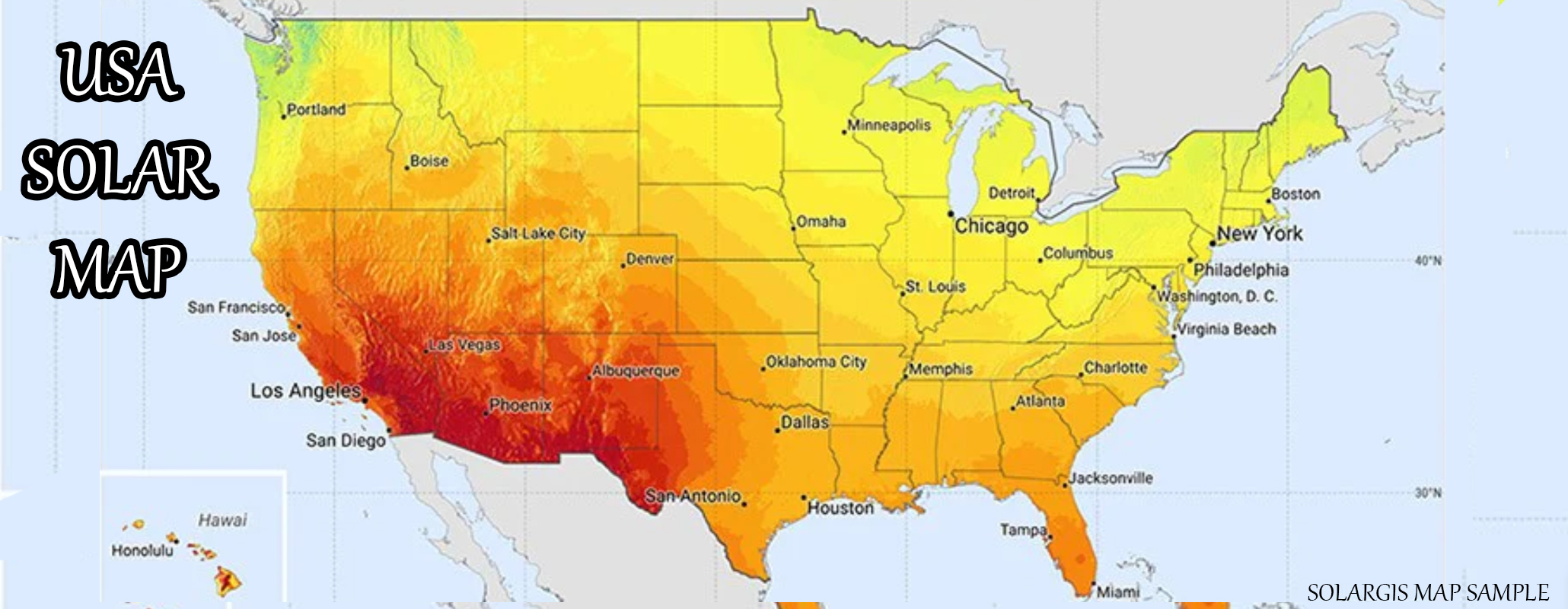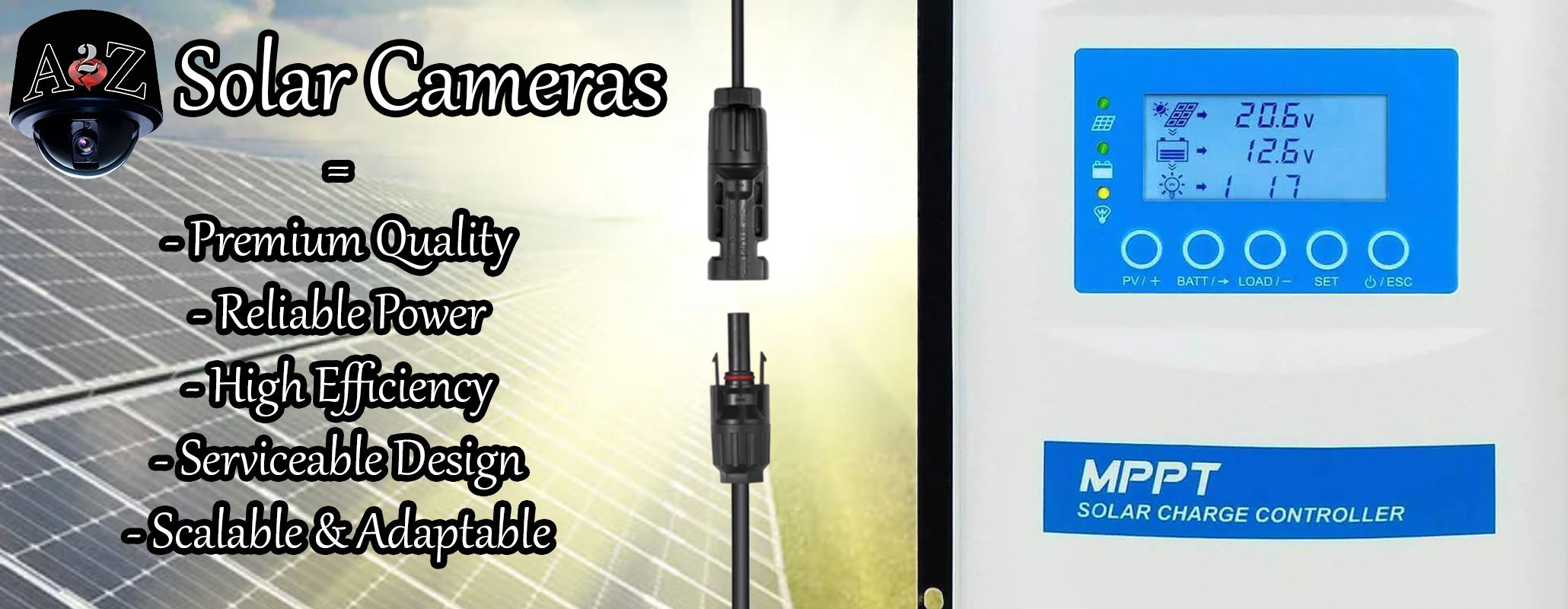Solar Camera Power Planning Guide – A2Z Design Factors & Real-World Examples

By Justin C., Video Security System Specialist — A2Z Security Cameras
Last updated: September 4, 2025
Solar camera power planning is where dependable security meets real-world constraints. The same system that looks fine on paper can stumble in winter sun, high winds, or when loads grow over time. This guide explains how A2Z approaches the problem: start with the mission, model the energy honestly, design the mechanics for the site, and leave room for what’s next. With nearly 20 years of building, deploying, and supporting solar & mobile surveillance systems, we help customers prioritize what matters most for their environment and budget while achieving top-tier performance, features, and long-term ROI.
Plain-English explainer: Solar powered security cameras and broader solar surveillance systems work only as well as the power plan behind them. Getting PV, batteries, and mounts right up front avoids mid-winter outages and costly service runs.
What makes an A2Z solar system different
Great outcomes start with fundamentals done right and then tailored to the site. We use premium PV modules and array configurations matched to your climate and mount (e.g., monocrystalline, bifacial where it helps), high-grade aluminum, UL-rated enclosures for corrosion resistance and weight savings, MPPT charging, and proper-gauge, high-quality wiring (upsized when runs demand) to minimize losses. From there, the design becomes about fit: a highway pole may favor U-bolts; a wood utility structure might call for lag bolts; municipal and airport work often prefers stainless banding for speed and consistency. We keep layouts open-platform (PoE/low-voltage) so you can run best-in-class cameras, radios, and analytics today—while reserving physical and power headroom for tomorrow’s needs. The result is a system that’s reliable by construction and serviceable without requiring a total upgrade or replacement.
Highlights at a glance - PV modules tuned to the site: winter-biased sizing and stringing matched to the controller’s MPPT window and operating voltage; standardized on late-generation monocrystalline, with bifacial where beneficial.
- Aluminum, UL-rated enclosures with thermal management, sized to fit demand and customizable.
- Mounting adaptability: engineered pole/tower/wall/roof and mobile options; U-bolt, lag bolt, and stainless banding hardware support options.
- Commercial/high-wind PV mounts sized to exposure category and gust loads, with support for varying preferences and mounting types.
- Open-platform layouts (PoE/low-voltage) to support custom combos of premium cameras, radios, other devices, and analytics now—plus later.
- Serviceability by design: commercial-grade, component-level serviceable, adaptable, and expandable.
Plain-English explainer: These choices aren’t “nice-to-haves.” For solar CCTV and solar IP camera deployments, mechanical quality and electrical efficiency directly determine uptime and lifespan.

Where you’ll find these designs in the field
A2Z solutions span municipal, critical infrastructure, private, and specialty deployments. The common thread is that each site’s power, environment, and mechanical realities drive the design—never a one-size-fits-all kit.
- City & municipal: parks, community centers, streets, highways, and traffic monitoring—often with mixed PTZ vs fixed coverage and high-wind considerations.
- Critical facilities: airports, ports, and power generation with strict AHJ requirements, exposure categories, and serviceability standards.
- Private properties: ranches, farms/livestock operations, and estates needing long runs, seasonal weather resilience, and simple on-site maintenance.
- Anti-poaching (Southern Africa): solar + thermal wireless systems with dispersed components for rugged terrain, long-range links, and low-profile mounts—supporting conservation teams protecting endangered species such as black rhinos.
- Nature monitoring & live streaming: broadcast-quality audio/video adapted to unique landscapes (e.g., birds of prey) with quiet power envelopes.
- Education & communities: general parking lots to LPR/ALPR for HOAs, campuses, and facilities.
- Remote assets & construction: simplified all-in-one builds and high-power active deterrence (lights/speakers) that change behavior, not just record it.
- Regulated agriculture (e.g., cannabis): high camera counts, area lighting, alarm integration, long-term edge storage and storage planning, on-site VMS, and cellular/satellite uplinks.
- Specialized sensing: tank-level and equipment monitoring sharing the same resilient power backbone.
Plain-English explainer: These scenarios show why solar powered camera systems must be tailored. A windy highway pole and a foggy coastal marsh need different mounts, angles, and margins—even if the cameras look similar.
The planning flow (plain language, then quick checks)
We first model electrical load—cameras, backhaul, regulators, and event-driven features like white light or audio. Next we choose autonomy (how many days you should ride through bad weather) and ensure the system can recover during the lowest-sun season for the site’s region and environment (e.g., winter PSH, monsoon/overcast seasons, coastal fog belts). Chemistry matters: LiFePO₄ offers high usable capacity and long cycle life but needs protection when charging below ~0 °C; AGM is heavier with lower usable DoD but proven and tolerant of cold discharge. Finally, we set system voltage (12/24/48 V) to control current, wire gauge, and regulator heat, and we match mechanicals—mounts, fasteners, grounding, and service clearances—to the structure and other project-specific demands (e.g., permitting standards, wind-exposure category, maintenance access).
Quick checks we run on every design - Seasonal/region bias: size to the site’s lowest seasonal peak sun hours (PSH) and microclimate (coastal fog, mountain shade lines, snow/soiling, horizon obstructions).
- Load honesty: include PoE/reg overhead and duty events (deterrence, PTZ moves).
- Recovery math: make sure the array can recharge the bank after autonomy has been used.
- Voltage & cable: choose 24/48 V as currents rise; verify voltage drop at the actual run length.
- Wind & mounting (as needed): match mount class to site exposure; verify local permitting/standards on request.
Plain-English explainer: This is the “no surprises” checklist. It keeps solar surveillance systems online in February, not just in July demos.

Regional solar performance: design to the site, not the brochure
Solar resource is regional and seasonal, and microclimates make it local. We bias calculations to winter PSH and then account for coastal fog, mountain shade lines, snow, dust/soiling, and horizon obstructions. Panel tilt and azimuth are set for winter harvest; partial shading is avoided, and we add margin for soiling and aging. Site wind exposure drives mount selection and sometimes enclosure form factor. These are the levers that keep uptime predictable in January, not just in June.
Ready to compare a site or project? Talk with an engineer for a tailored design recommendation. Contact A2Z

PV module choices & BOS details (what actually matters)
Not all solar panels or connectors are equal, and a few decisions have outsized impact on reliability and yield.
- Mono vs. poly: modern monocrystalline modules typically deliver higher efficiency and better low-light response; polycrystalline can be cost-effective but often larger for the same wattage.
- Bifacial (dual-face): can add rear-side gain when there’s high albedo (snow, sand, bright surfaces) and adequate rear clearance; less helpful over dark ground or tight backplates.
- Cell & busbar design: half-cut cells and multi-busbar layouts reduce resistive losses and shade sensitivity, improving harvest and thermal behavior. Adopt late-generation designs for peak results.
- Temperature coefficient: check the power coefficient (−%/°C); better (less negative) values hold output in heat—important for desert or rooftop installs.
- Match to MPPT window: string the array so Vmp/Voc sit inside the controller’s window across temperature extremes; avoid too-low Vmp that starves MPPT.
- Pro-grade connectivity: we standardize on MC4-style connectors and provide plug-and-play extension cables to keep installs clean, open-platform, and field-serviceable.
- Protection & routing: UV-resistant cabling, appropriate fusing/breakers, surge suppression, drip loops, and quality wiring help ensure performance over the system’s life.
These aren’t a parts list—they’re cues that keep systems producing power consistently and make installs faster for your team or your integrator.
Plain-English explainer: Panel selection and BOS details look “minor,” but for solar CCTV uptime they’re the difference between planned service and unexpected truck rolls.
How the sizing works (core formulas)
Here are example formulas professionals like A2Z use to deliver a custom-tailored solution for your site.
1) Average power (incl. conversion overhead)
W_avg = (Σ W_i) * (1 + overhead)
2) Daily energy
Wh_per_day = W_avg * 24
3) Energy for autonomy (ride-through days)
Wh_aut = Wh_per_day * Autonomy_days
4) Battery capacity (chemistry + temperature)
Wh_req = Wh_aut / (DoD * TempFactor)
Ah_at_V = Wh_req / V_system
5) PV array (winter-biased, incl. losses)
W_PV ≈ (Wh_per_day * k_loss) / PSH_winter
6) Recovery check (post-storm recharge)
Daily_recharge ≈ PSH_winter * W_PV * eta_MPPT ≥ Wh_per_day
Typical planning values:
- overhead ≈ 0.12–0.22 (PoE/regulator + wiring losses)
- k_loss ≈ 1.3 (controller/cable/angle losses; then add 20–40% margin for soiling/shade/aging)
- eta_MPPT ≈ 0.95–0.98
- DoD: LiFePO4 ≈ 0.8, AGM ≈ 0.5
- TempFactor (cold) ≈ 0.85
Plain-English explainer: These quick formulas keep the math honest so solar powered camera systems ride through bad weather and recharge fast enough afterward.
Typical loads (planning envelopes)
In the real world, power draw varies widely. Consumer/entry-level all-in-one solar cameras are engineered around very low power budgets, often with simpler features and lower performance; some factory pre-built “pro” units lock you into fixed budgets or operate uniquely and present limits in functionality; custom-tailored solar for pro-grade equipment often must support higher and more variable loads. The ranges below reflect pro-grade devices A2Z commonly deploys. Low-cost or poorly designed kits often can’t produce enough power to run today’s highest-performance cameras, radios, and deterrents reliably—especially in regions with harsh winters and low winter sun. Considering the complexity of numerous integrated technologies and the universal challenges of power production, equipment draw, and cost, end users may not immediately realize why not all “solar cameras” are equal by any means.
Device draw also shifts by model and features (AI/analytics, edge recording, frame rate/bitrate, multi-streaming), illumination/deterrence duty, and environment. Use the Standard band for mainstream pro builds; use Performance when enabling on-camera AI, higher frame rates/bitrates, integrated deterrence, or when a specific high-spec model is required. This chart focuses on parameters involving common types of professional-grade components.
| Function / device class | Standard avg W | Performance avg W | Notes |
|---|---|---|---|
| Fixed IP camera (4–8 MP, H.265) | 4–8 | 8–12 | Higher with AI/edge record, multi-stream, or heavy IR duty |
| Compact PTZ (mini/micro) | 8–15 | 15–22 | Our ultra-efficient small PTZ builds typically live in the lower band |
| Full-size PTZ (idle/patrol) | 18–35 | 30–55 | Peaks much higher during moves/zoom/IR; plan margin |
| Thermal or multi-imager | 12–25 | 20–40 | Depends on fusion, analytics, and frame rates |
| LTE/5G router or PTP radio | 4–12 | 10–20 | 5G/high-throughput or long links draw more |
| High-throughput PTP backhaul (dedicated) | 8–18 | 18–35 | Licensed or long-range links trend higher |
| Edge micro-NVR / mini PC (where used) | 8–18 | 18–35 | For on-site retention/analytics beyond the camera |
Adders (apply on top of device loads) - PoE/regulator overhead: add +12–22% to the sum of powered devices.
- Event/duty loads: treat illumination, speakers, and PTZ motion surges as event energy, not base load.
- Quick calc: average W add = Power × (hours_active ÷ 24).
- Example: 20 W deterrence light, 10 min/hr at night (≈12 hr): duty = (10/60)×(12/24)=0.083 → +1.7 W average.
- Environmental adders (site-dependent): LiFePO₄ heat pad 5–15 W when sub-freezing; enclosure heater/fan 3–20 W—model as duty-based.
Plain-English explainer: These ranges help right-size solar surveillance systems. Underestimating a PTZ’s event energy or a radio’s duty cycle is the #1 reason systems go dark in winter.
Edge-first, cloud-connected
We favor edge recording and analytics for low latency, bandwidth efficiency, and resilience. When it adds value, we layer cloud connectivity for multi-site visibility, secure remote access, and selective off-site backup—without requiring continuous uplink. Open standards (e.g., ONVIF-friendly workflows) preserve flexibility across vendors and generations, and pair well with storage planning for meeting retention targets and requirements.
Plain-English explainer: Edge-first means your solar CCTV keeps capturing evidence even if the link drops. Cloud is layered on your terms for alerts and clip sync.
Install-ready, built-for-you (as plug-and-play as possible)
A2Z helps you deploy premium, custom solutions without needing expert-level experience. Packages are engineered to be self-install friendly and also fit professional integrator workflows.
- Purpose-built enclosures & harnessing: pre-built assemblies sized/styled for the deployment, with clean cable management and service access. (Materials/finishes/options vary by project.)
- Pre-set power & network (project-specific): controller profiles and addressing prepared to your specs; PoE and power budgets reviewed for the intended device mix.
- Mounting & mobility choices: hardware options for U-bolts, lag bolts, stainless banding, and ground/mobile mounts to match structure and site conditions.
- Guided commissioning & support: pre- and post-sale guidance with an optional remote turn-up session; on-site services available through A2Z partners when desired.
- Install docs & AHJ support (as needed): concise install notes/checklists; project submittals available upon request.
Prefer to self-install with your team? Great—most customers do. Working with an integrator? Also great. Either way, you’re starting from a ready-to-deploy system—not a scratch-build—so you avoid trial-and-error and get to results faster.
Plain-English explainer: Pre-engineered solar powered camera systems speed up deployment, reduce field wiring errors, and simplify future service.
Cheap kits, pre-builts, and engineered systems—what’s the difference?
Consumer and proprietary kits trade price for serviceability and performance; they’re often sealed, non-expandable, and hard to repair. Some major manufacturers sell pre-built solar cameras that fit certain jobs, but they’re typically limited in device choice and growth. The market also includes race-to-the-bottom builds that under-spec arrays, wiring, and protection. A2Z engineered systems prioritize uptime and image quality, use robust mechanicals, and reserve power and physical space so your system can scale instead of starting over.
Plain-English explainer: If you need reliable security, pick a platform that lets you change cameras, radios, and storage over time—without replacing the whole solar system.
Quick takeaways (for skimmers)
- Design to winter PSH and wind exposure; check recovery, not just autonomy.
- Prefer aluminum, UL-rated enclosures, MPPT, and proper-gauge wiring.
- Choose 24/48 V as loads climb; verify voltage drop at the actual run.
- Treat deterrence lights/speakers and PTZ motion as event energy, not free.
- Keep platforms open and serviceable so you can add radios, analytics, or cameras later.
- Choose install-ready A2Z packages: self-install with guided commissioning or use a pro integrator—no DIY-from-scratch required.
Talk with an engineer / keep exploring
- Read: PTZ vs Fixed Cameras
- Read: Security Camera Storage Options
- Read: All About Video Analytics & AI for CCTV & IP Cameras
- Start a design conversation: Contact A2Z · See category: Security Camera Systems · FAQ: Solar Security Cameras & Specialized Surveillance FAQs
